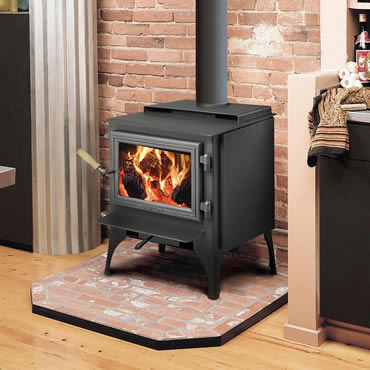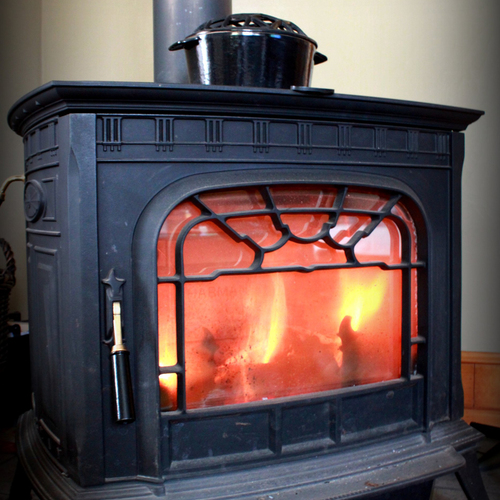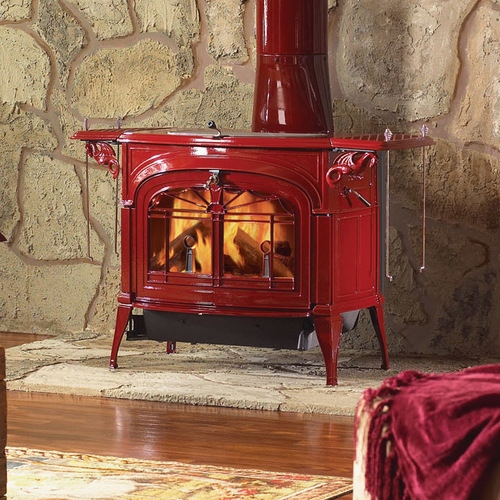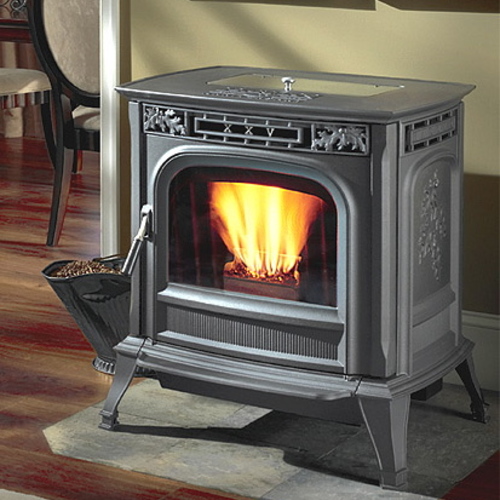Nobody speaks of this contest but everybody knows who’s winning. It’s how we get out the competitive impulse in rural Vermont: we race to have the neatest woodpile. Admit it: even as you’re reading this, saying “that’s not me,” you’re mentally comparing your woodpile with the neighbor’s.
There is no question about who is the winner in my neighborhood — the toymaker — and he flaunts it, building these perfect stacks in the middle of his lawn, near the road. After Hurricane Irene, I had a conversation in passing with someone I had never talked to before, from a different part of town. I was inquiring if the toymaker’s house, situated on the river, was okay. Yes, he said — even the woodpile is untouched. We understood each other perfectly.
If you heat with wood, you’re a competitor, like it or not. I am in this game, and I do poorly. I cut a lot of top wood that others would leave behind, and it doesn’t make for neat stacking. That’s fine with me — I put my extra effort into keeping my wood off the ground and well covered. Dry wood wins my game.
Weekly Newsletter
Get building science and energy efficiency advice, plus special offers, in your inbox.
Why wood heat remains popular
It’s the season to look at the popular practice of heating with wood. I heat with wood and have for my whole life. I like it for several reasons. I can cut and split my own wood, keeping my costs to a minimum, and giving me a sense of control over my family’s heat source. I’m not subject to the fluctuations of heating fuel prices, and I won’t have any problems from power outages or mechanical problems.
I also like the fact that I harvest firewood from the healthy, managed forest around my house — so at least in theory, there are no net carbon emissions (or minimal, when counting the chainsaw and some minimal transportation).
Downsides to wood heat include the labor involved and the fact that most homes need a backup system if you expect to be away for a few days in the middle of winter. Another downside is the problem of air particulates.
Don’t move firewood
Before getting into some of the safety details of stoves, let’s touch on a key item of ecosystem health: invasive insect species. Yes, I like eating insects, as discussed recently, but this is an area where I don’t mess around with them.
As the website DontMoveFirewood.org reports, “Tree-killing insects and diseases can lurk in firewood. These insects and diseases can’t move far on their own, but when people move firewood they can jump hundreds of miles. New infestations destroy our forests, property values, and cost huge sums of money to control.” Those insects include the emerald ash borer and the Asian longhorn beetle—feared pests that threaten economically and ecologically important hardwood forests in Eastern North America.
The recommendation is to use firewood from the most local source possible—under 10 miles is ideal, and over 50 miles is probably too far.
Watch out for hazardous air pollutants (HAPs)
Smoke resulting from incompletely burned wood contains hazardous air pollutants or HAPs (which may cause cancer), fine particle pollution, and volatile organic compounds (VOC). Particle pollution in smoke can damage lung tissue and lead to serious respiratory problems when breathed in high concentrations.
In low concentrations, particle pollution in wood smoke can harm the health of children, the elderly, and those with existing respiratory diseases. Burning seasoned wood in an EPA-certified wood stove minimizes this risk, but doesn’t eliminate it: where there’s fire, there’s smoke.
New wood stoves are worth the cost
I bought my first two wood stoves with the goal of saving money: they were relatively inexpensive, reconditioned units. Only last year did I give in and buy an EPA-certified wood stove, and I am glad I did.
EPA-certified wood stoves have to meet a limit of 4.1 grams per hour of particulate emissions for a catalytic stove, and 7.5 grams per minute for a noncatalytic stove. On average, this amounts to at least 50% less pollution, and possibly depending on how old and inefficient your particular model of stove is. Minimum efficiency rates are 63% for “noncat” and 78% for “cat,” although some stoves boast higher efficiency. Given the health risks of wood smoke, those reduced emissions numbers really make a difference. And the effort saved in a more efficient stove helps pay the cost difference.
Stoves built before 1989—less efficient, more polluting
Any wood stove built before 1989 is not EPA certified, and is likely to be much less efficient and much more polluting then a stove built since then. While older wood stoves tend to rely on pretty basic baffles to burn as cleanly as possible, newer stoves do this better with insulated fireboxes that keep the fire hot, and more sophisticated after-burn systems. And they are laboratory-tested, so we know they work as designed, unlike older stoves that rely on someone’s half-baked idea of how wood smoke “ought” to travel.
I can say from experience that the new models work a lot better, and the $300 federal tax credit can help pay for them. When you install it, have a professional do it to make sure it’s done safely.
Dry firewood, and professional cleaning are key
Burning only clean, dry, and seasoned hardwood that has been split and dried for at least six months is also essential for clean, efficient burning. Properly seasoned wood is darker, has cracks in the end grain, and sounds hollow when smacked against another piece of wood.
Another step that I have been less-than-religious about in the past, is to have a professional chimney sweep inspect my wood stove and chimney on an annual basis. Here again, I have learned my lesson: wondering why I couldn’t get a fire going this fall, I called my local chimney sweep, who promptly removed the creosote blockage from my cap and chimney. Chimney sweeping is a pretty easy DIY job for many homes, but it’s only a DIY job done if you actually DIY… if not, time to call the pros, who do a great job.
Hot gases from the fire condense on the chimney to form creosote, particularly in cold locations like the cap. Keeping your chimney clean may not be as visible an effort as keeping that wood pile neat, but it can help prevent a dangerous chimney fire or an unpleasant back draft. Oh yes, it’s common sense, but worth saying: when removing ashes, deposit them in a closed metal container. Stay warm, and stay safe!
Tristan Roberts is Editorial Director at BuildingGreen, Inc., in Brattleboro, Vermont, which publishes information on green building solutions.
















7 Comments
Wood cook stove
Are there any wood cook stoves that meet the EPA guidelines? I have always had a wood stove until this current house and miss it terribly. I am designing the next and would like to incorporate a wood cook stove into it. We tend to have ice storms that can take the power down for days. A cook stove would be ideal.
Response to Elizabeth Guinn
Elizabeth,
The Napolean 1150 Wood Gourmet Stove (about $2,000) claims to be a cook stove, but it isn't really a cook stove, because it lacks an oven.
Here's an article written by a welder who was frustrated by the fact that the EPA excludes wood cook stoves from regulation: http://www.gulland.ca/homenergy/stove.htm
Another good cook stove.
Elizabeth,
You may want to consider a "Vermont Bun Baker".
http://www.vermontwoodstove.com/bunbaker_specifications.htm
It claims to be quite an efficient woodburner, though as Martin suggests, it is exempt from EPA regulations by virtue of being a cook stove.
I'm curious...
I'm just a city boy in Columbus, Ohio, and I'm not personally familiar with anyone who burns wood for heat. Those that do burn wood do so for aesthetic reasons only and have to be somewhat creative in sourcing their wood (I typically wait for neighbors to cut down landscape trees). In areas where wood burning is much more common, how do most people source their wood? You mentioned, Tristan, that you have a forest around your house - do many people in your area own enough land and trees to source their own wood? Or perhaps there are privately owned local forests that people purchase rights to harvest wood from? I'm only curious because I love the idea of burning wood for heat but the concept is so foreign in my part of the country.
getting firewood
Ben, it is most common to buy delivered cordwood from a supplier who is either 1) managing acreage for a mix of firewood and lumber, or 2) purchasing logs from a company that is managing acreage.
There is enough forest land in the Northeast that it is common to find suppliers either direct or indirect access to forest. Managing forests for lumber production is common, but many trees are "culled" for firewood because they are poor quality or need to be thinned to allow select trees to grow.
Many people live on a few acres and can cut firewood from their own land, hopefully managing it responsibly. It is also fairly common for towns that own forests to mark trees for removal and sell rights to cut them by the acre.
On the subject of cookstoves, I think it is frustrating in this day and age that companies can get around the EPA rules by simply claiming a stove is for cooking purposes. I am not in favor of all gov't regulation, but in woodstoves the EPA has really raised the bar and saved a lot of lives with air quality improvements.
Response to Ben
Ben,
In Vermont, many people cut firewood on their own land. One acre of mixed hardwoods can easily yield a cord of wood annually on a sustainable basis.
Otherwise, call up a firewood dealer. During the past few years, the price of a cord of hardwood (cut, split, and delivered) has ranged from $140 to $180 a cord around here.
Pollution
Some good points here; we're constantly talking about the importance of chimney cleaning, using seasoned wood, using modern EPA stoves, and explaining the pollution issues. Most people don't talk about the issue with moving firewood, but you're right: it is important: in addition to pests like the ash borer that can completely decimate local tree populations, local firewood has a smaller carbon footprint.
Just to nitpick a tiny bit on the section on pollutants: particulate matter is released whenever wood is burned, but yeah, technically particulates are un-burned wood. Also, if I did my research for my article on wood pollution correctly, VOCs are not released when burning pure untreated firewood, but VOCs are in many products that people burn that they shouldn't. Also some toxic gasses from incomplete combustion include carbon monoxide and notrogen dioxide; an efficient fire combats these two.
Again, good article. Indeed, wood heat is great so long as you keep safe.
Log in or create an account to post a comment.
Sign up Log in